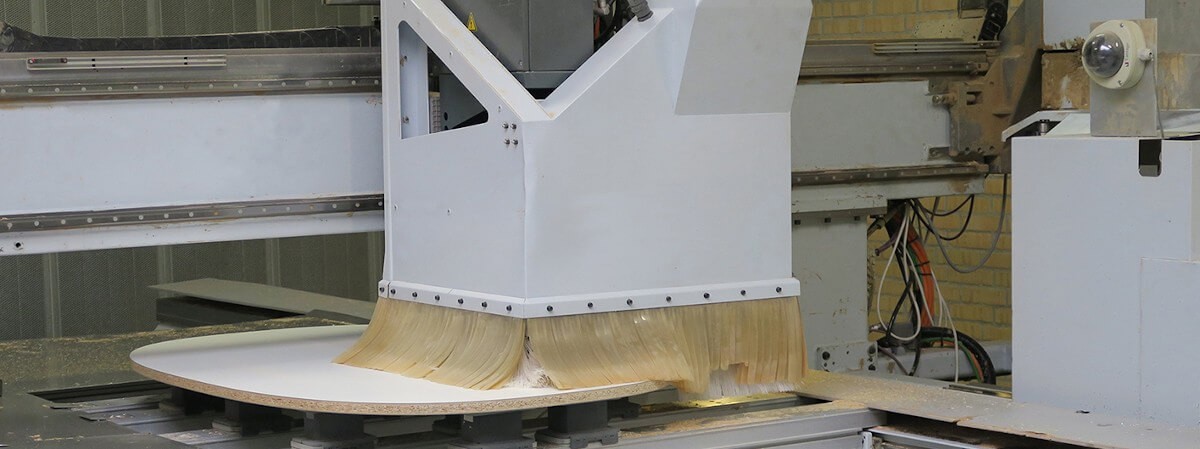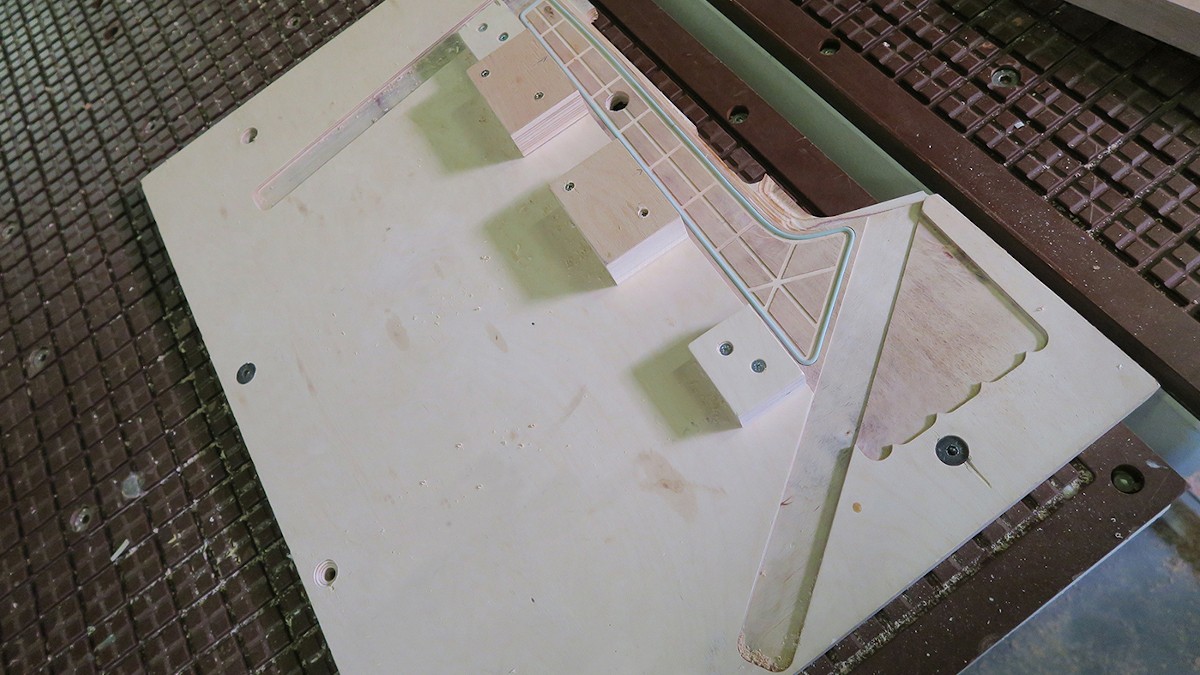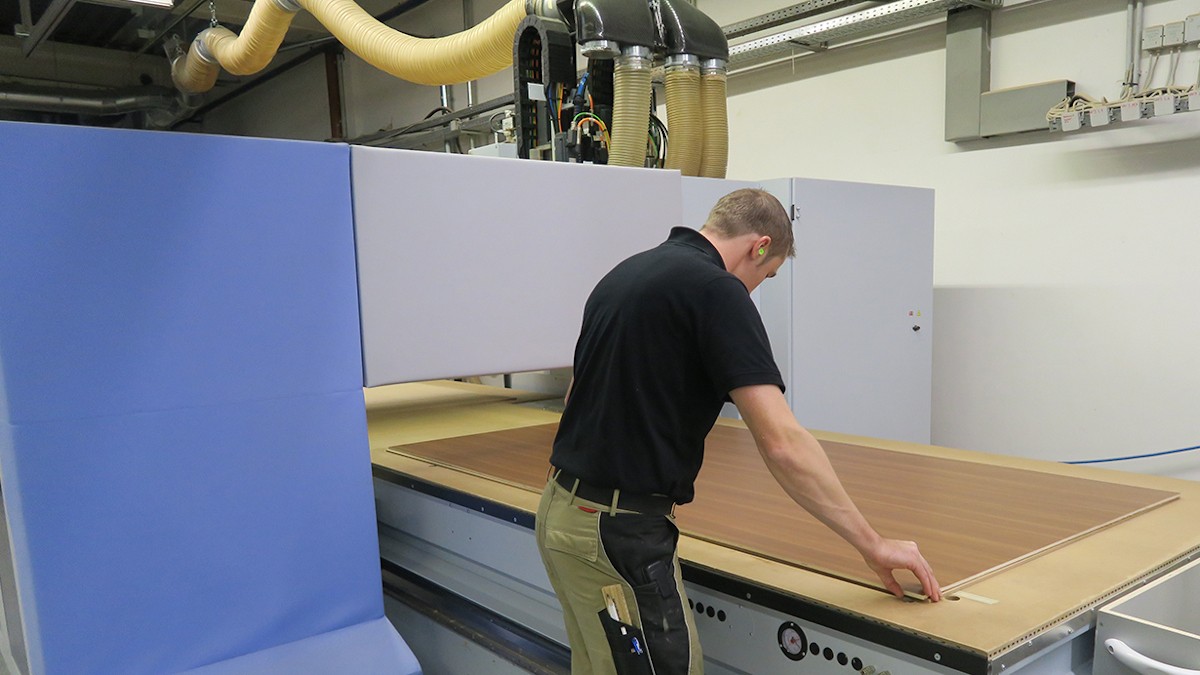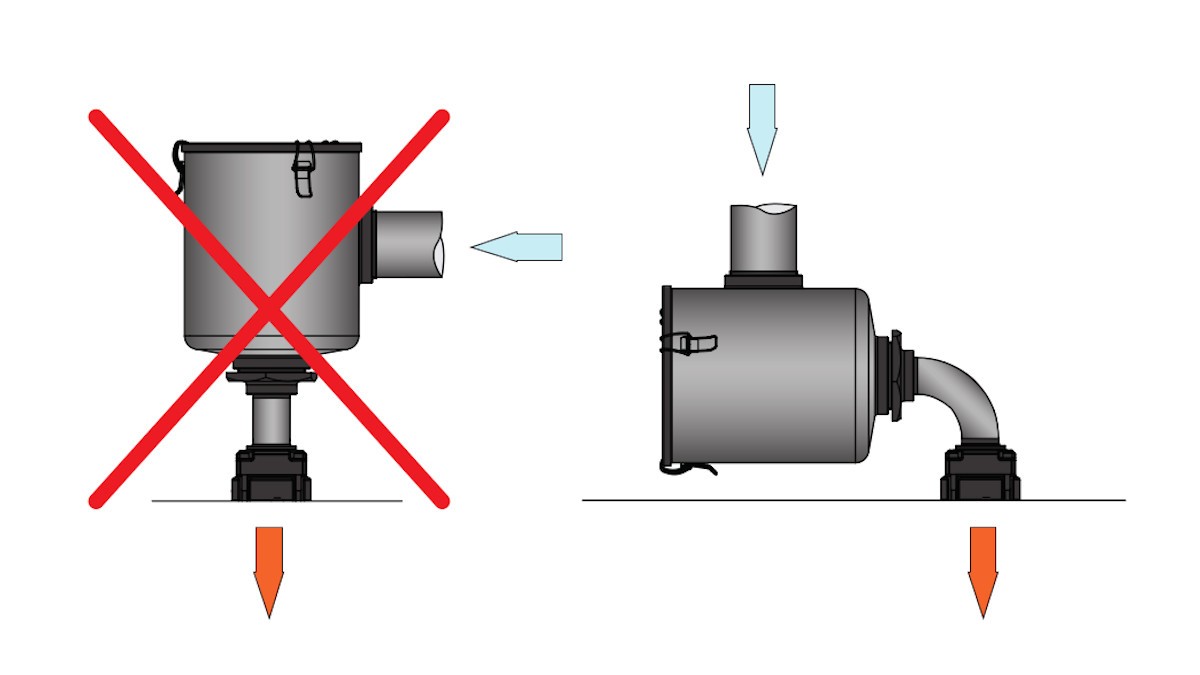Vacuum in Woodworking – Part 3
In both of the last issues, we explored details of vacuum technology in general and referred to the various possibilities for vacuum generation in particular. But what does this look like in everyday practice? What should you keep in mind, and how can vacuum supply be optimized? The realization that "The vacuum is too weak to hold my work piece" does not always necessarily correlate to the performance of the installed vacuum pump. This is why we would like to give you a couple of tips and tricks for installation, operation and maintenance of the vacuum supply.
There are usually three different clamping methods used with vacuum on various CNC routers or machining centres:
- Grid table
- 1. A work piece is laid directly on a sealed surface, clamped and machined.
- 2. A template or other device is sucked onto or mechanically fastened to the grid table and the actual work piece is clamped and machined on it.
- Nesting on grid tables
An air-permeable board, usually made out of MDF, lays on the grid table and is held by the vacuum. The work piece is laid on this MDF board and suctioned through the MDF board. It is possible to use a second board as a protection board.
- Consoles with vacuum blocks
Instead of a large-scale machining table, this system consists of individual consoles that can be mounted accordingly for the work piece shape. These consoles are equipped with vacuum cups (vacuum blocks). The work piece lays on top of these vacuum blocks, is suctioned and held by them. All vacuum blocks are connected to the vacuum supply via internal pipelines.
As a general rule, it can be assumed that for the nesting method larger vacuum pumps need to be used, meaning vacuum pumps with higher pumping speeds. This is due to the fact that the vacuum pumps constantly extract air through the entire surface of the MDF board, and the MDF board is often not completely covered by a work piece. So, during the entire machining operation, the vacuum pump has to extract more air than necessary for the actual clamping. For consoles with vacuum blocks or those that use direct clamping on grid tables, this additional suction surface is not present.
Installation of the vacuum pump
For all vacuum clamping procedures, the vacuum pump should be installed as close as possible next to or in the machining equipment to realize the shortest possible lines between the clamping equipment and the vacuum pump. This is because, in addition to extracting the air between the work piece and the surface it is resting on (grid table, MDF board or vacuum block), the vacuum pump also has to extract the entire volume in the pipelines or tubes. The risk of leakage increases as the length of the lines and the number of valves, tube connections, junctions, bends, and so forth increases. This means that air penetrating through leaks must also be extracted by the vacuum pump.
TIP: If you need to install tubing between the clamping device and the vacuum pump yourself, we recommend absolutely avoiding hemp as a sealant. Vacuum extracts the moisture contained in the hemp, which means that it quickly dries out and loses its sealing effect. This is why Teflon tape should be used as a sealing material between fittings and tubes.
The diameter of the tubes is an extremely important aspect that needs to be taken into account. It may never be smaller than the vacuum pump's inlet flange. This is because the vacuum pump can only extract as much air as can fit through the narrowest section of tubing in a certain period of time. Exchanging the existing vacuum pump with a larger and more powerful one would have no positive effect at all on the clamping force if the tubes are too small. Narrow curves or elbows in the tubes should be avoided whenever possible, as they negatively influence the air flow.
Tightness of the seal for the vacuum supply
The tighter the seal of the vacuum supply, the more effectively a vacuum pump can work. This applies not only to pipelines or tubes, but also to the clamping device itself. Direct clamping on the grid table During this process, attention should be paid to carefully and completely sealing the surface underneath the work piece with a sealant, such that the work piece completely covers the sealed surface and lies directly on top of the sealed area. It is also important to ensure that one or more access points to the vacuum supply are open only on the inner section of the sealed part of the grid table. Make sure that all suction bores in the table that may be outside of the sealed area are sealed off. Clamping with templates on the grid table If the template needs to be clamped using vacuum, it needs to be sealed as described above. However, mechanical clamping is also possible. The supporting surface of the work piece within the template itself must in turn be properly and completely sealed with sealing cord. Nesting method As described above, when the nesting method is used, there is always loss of performance due to leakage if a larger section of the MDF board is not covered by a work piece.
TIP: Placing an airtight board, mat or film on this surface can provide effective help in this situation.
When using the nesting method, the MDF board used as the protection board should also be checked to see how air-permeable it is. Air-permeability can change depending on the board manufacturer, use of resin and composition of sawdust. It may be necessary to try different boards to find the ideal material. MDF boards are pressed using heat during manufacturing. This makes the surface less porous and air-permeable than the inside of the board.
TIP: Use a second MDF board and mill the contours of the work piece. Then the board is more air-permeable where the work piece is, and the clamping force should be more effective as more air is extracted there than on the remaining surface of the board.
Consoles with vacuum blocks When working with consoles and vacuum blocks, attention should always be paid to ensuring that all vacuum blocks securely lay on the entire surface of the work piece so that no leakage air can be extracted. Vacuum blocks that are not being used should be disconnected from the vacuum supply or removed entirely.
Vacuum pump installation site
As mentioned above, the vacuum pump should be located as close as possible to the machining equipment or be built into it to ensure that the tube lengths are as short as possible. In this case however, good accessibility to the vacuum pump should be taken into consideration to ensure that possible inspections and maintenance work can be performed. Furthermore, attention should be paid to ensuring a sufficient supply of fresh air, at least where air-cooled vacuum pumps are used. Heavy soiling should be avoided. Modern vacuum pumps have a smooth surface that is easy to clean with low surface temperatures. Regularly using compressed air to blow off dust or shavings is sufficient here. Some vacuum pumps can also have very hot surfaces of close to 100 °C. This presents a risk that dust or shavings could spontaneously combust. In these cases it is particularly important to regularly check how soiled the vacuum pump is and keep it clean. Maintaining the vacuum pump
All vacuum pumps should generally have an upstream filter (inlet filter) that prevents dust or other particles or liquids from making their way into the vacuum pump. Depending on the amount of dust, this filter must be regularly cleaned. Using compressed air to blow particles out of the filter element is usually sufficient. TIP: Ensure that the filter is attached in a horizontal position. This ensures that dust cannot enter the vacuum pump when the filter is opened or the filter element is removed.
Oil-lubricated rotary vane vacuum pumps The oil level should be regularly visually inspected. If necessary, the oil should be topped up. If the oil takes on a black colour, an oil change should be performed. Changing the filter elements and the oil should be done at least once a year (two times a year if the vacuum pump is used in three-shift operation).
Liquid ring vacuum pumps The water level should be checked every day and topped up if needed. Attention should be paid to how dirty the water is. If sludge forms, the water should be exchanged, and the water circuit should be cleaned. If the same water is also used to cool the shaft, the coolant lines also need to be cleaned.
Dry-running rotary vane vacuum pumps As the vanes are subject to permanent wear, they must be regularly inspected. Larger vacuum pumps (≤100 m3/h) need to be inspected every six months. In the process, the vacuum pump is opened, and the vane length and thickness are checked. If this inspection is not performed, there is a risk that a vane could break, thus leading to total failure of the vacuum pump.
TIP: If dry-running rotary vane vacuum pumps are continuously operated, a replacement pump should always be immediately available if there is a failure due to vane breakage.
MINK claw vacuum pumps The contact-free compression principle ensures that no wear takes place inside the vacuum pump and no spare parts are needed. However, these vacuum pumps have a synchronizing gearbox separate from the compression chamber. The oil level should be visually inspected once a month through the oil sight glass. An oil change is necessary after 20,000 operating hours at the latest. In practice, changing the gear oil annually is recommended for three-shift operation.
Control
The vacuum pump control system is normally integrated into the machine controls. In this case, vacuum is applied via a valve during clamping. After the machining operation is finished, the clamping device is then ventilated again to remove the work piece. The vacuum pump operates constantly throughout this process. For longer downtimes or clamping times, considerations should be made as to whether it is possible to have a buffer volume through additional installation of a vacuum vessel, enabling the vacuum pump to automatically shut off when the ultimate pressure has been reached and then turn back on when a pre-set pressure is reached. From an energy-saving perspective, using a frequency-controlled vacuum pump is the best choice. With the variable speed, it can be automatically set to meet requirements and thus only consume the energy that is actually necessary for clamping. Advice from a vacuum specialist is necessary to optimize the control system.



